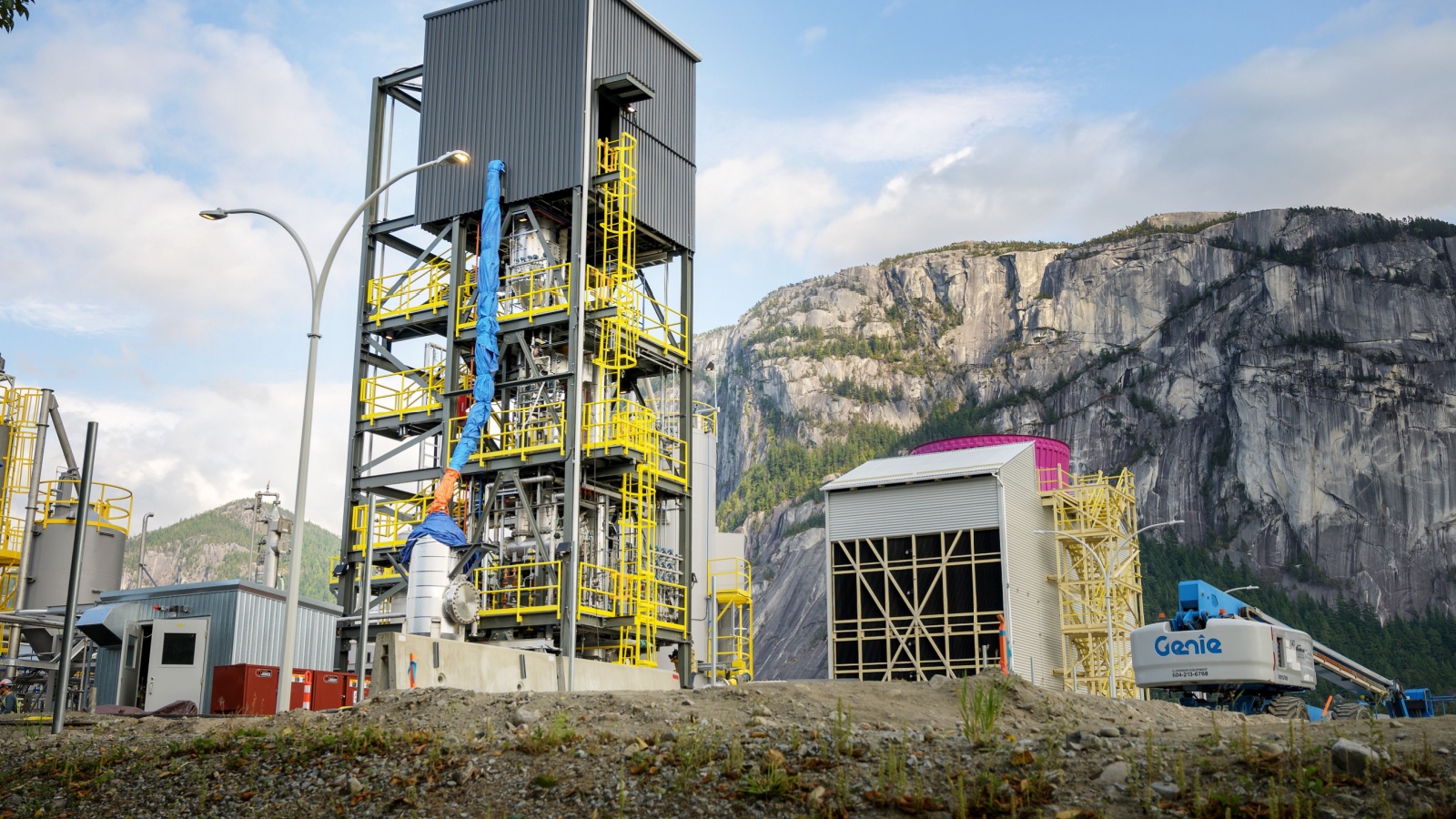Innovation doesn’t always arrive with a parade. Sometimes, it slips quietly out of a Canadian lab, startup, or university and ends up reshaping the world before anyone notices where it came from. From artificial intelligence to sustainable packaging, Canadians have a knack for turning smart ideas into globally adopted standards. Many of these breakthroughs aren’t just clever; they’ve changed how industries operate, how technology evolves, and even how people live. Here are 20 Canadian breakthroughs the world is quietly copying.
The Birth of Artificial Intelligence Research

Long before Silicon Valley claimed it, AI research found its early footing in Canada through pioneers like Geoffrey Hinton at the University of Toronto. His work on neural networks laid the foundation for machine learning used in ChatGPT, Siri, and Google Translate today. The country’s deep-learning labs, including Mila in Montreal, became breeding grounds for global talent. Tech giants soon opened AI research hubs in Toronto and Edmonton, directly inspired by these advancements. Hinton’s decision to share his models publicly accelerated AI’s spread, making Canadian innovation the hidden engine behind modern algorithms now driving industries worldwide.
The Pacemaker That Saved Millions

The first wearable pacemaker, designed in 1950 by electrical engineer John Hopps from Winnipeg, revolutionized cardiac care. His invention emerged while experimenting with radio frequency heating for hypothermia treatment. Hopps realized the heart could be “stimulated” electrically, a discovery that led to modern pacemakers used in over 3 million patients today. What began as an experimental curiosity in a Canadian lab became a global medical staple. Modern iterations, now smaller and more efficient, still rely on Hopps’s principles, and his work remains the blueprint for life-saving cardiac rhythm management used by hospitals around the world.
Insulin and the Diabetes Revolution

In 1921, Frederick Banting and Charles Best, alongside J.J.R. Macleod at the University of Toronto, isolated insulin, a discovery that transformed diabetes from a death sentence into a manageable condition. The researchers chose not to patent their discovery for profit, selling it for just one dollar to ensure universal access. This ethical move set a precedent for open medical research. Pharmaceutical companies worldwide adopted the formula, developing synthetic insulin and delivery systems. Banting’s work didn’t just save lives; it created a model of scientific integrity and collaboration that remains a global benchmark in medical innovation.
The Wonder Material: Graphene’s Early Development

While often credited to UK scientists, graphene’s commercial foundations were deeply influenced by Canadian researchers at the National Research Council. They refined early exfoliation and application techniques that made large-scale graphene production possible. This one-atom-thick carbon sheet is now essential in flexible electronics, water filtration, and aerospace materials. Canada’s mining expertise in graphite gave its scientists a unique advantage in material processing, and companies like Grafoid and NanoXplore have since become global suppliers. The ripple effect of that work is visible today in batteries, sensors, and sustainable energy solutions inspired by Canadian advancements.
The Robotic Arm for Space Exploration

The iconic Canadarm, created by Spar Aerospace in the 1980s, became one of NASA’s most vital tools for space shuttle missions. Its ability to deploy satellites and repair spacecraft changed space operations forever. The precision robotics behind it have since been adapted for manufacturing, surgery, and even underwater exploration. Canadarm2, a successor to the International Space Station, is still operated remotely from Quebec. Its engineering excellence sparked robotics programs in Japan, Europe, and the U.S., proving that Canadian mechanical design quietly defined how humans interact with machines beyond Earth.
The World’s First Electron Microscope Imaging Techniques

At the University of Toronto, physicist Eli Franklin Burton and his students perfected the electron microscope’s design in the 1930s. Their work enabled scientists to visualize viruses and cellular structures at an atomic level, something previously thought impossible. The technique became indispensable to microbiology and nanotechnology. Over the decades, international labs refined the microscope but continued using Burton’s fundamental lens design and electron beam principles. Today, it remains one of the most influential scientific tools in medicine and materials science, another quiet Canadian achievement that forever changed global research.
The Electric Wheelchair Innovation

In 1953, George Klein, a Canadian engineer, developed the first electric wheelchair to aid injured veterans. His design used joystick control and rechargeable batteries, granting mobility independence to millions. The global assistive tech industry that followed owes its existence to this invention. Later adaptations incorporated sensors and software for smoother control, but the mechanical core remains Klein’s. His prototype paved the way for modern mobility aids and even inspired advancements in robotics. The electric wheelchair stands as an example of how Canadian empathy and engineering merged to create lasting, worldwide change.
SMART Weather Satellite Systems

Canadian scientists revolutionized meteorology through the Alouette satellite program, launched in 1962. It was the first satellite to study the ionosphere, helping scientists understand space weather’s impact on communication systems. These data-gathering techniques later influenced global weather satellite systems, forming the backbone of GPS accuracy and aviation forecasting. Countries adopted Canada’s compact, cost-efficient satellite technology to monitor climate conditions. The Alouette program’s success made Canada the third nation to design and operate its own satellite, quietly shaping how every modern nation collects environmental and atmospheric data.
The IMAX Cinematic Experience

IMAX was born in 1967 at Montreal’s Expo by a team led by Graeme Ferguson. Their large-format projection technology created an immersive experience that drew global attention. Today, IMAX theaters operate in over 80 countries, using Canadian-developed projection systems and curved screens. The format redefined visual storytelling, especially for documentaries and blockbuster films. Even streaming giants have adopted IMAX’s aspect ratios for enhanced viewing. What began as a Canadian experiment in visual scale became a universal cinematic standard that continues to influence how audiences experience storytelling on the big screen.
The Smartphone Touchscreen Interface

Before the iPhone era, Canadian company Research In Motion (RIM) pioneered mobile interactivity with the BlackBerry. Its innovations in capacitive touch and secure messaging paved the way for smartphones as we know them. The company’s push for mobile email and encryption created a model later emulated by Apple and Android systems. While the BlackBerry brand faded, its technological DNA remains embedded in every device that uses touchscreen navigation and end-to-end encryption. The quiet brilliance of Canadian engineers shaped how billions now communicate, blending accessibility with unmatched data security standards.
The World’s First Online Banking System

In 1982, Toronto-based Canadian Imperial Bank of Commerce launched one of the earliest online banking networks, known as “HomeLink.” Customers used personal computers and telephones to make transactions, a concept unheard of at the time. This prototype directly influenced global adoption of digital banking in the 1990s. As nations moved online, they borrowed heavily from the Canadian model of encrypted, user-controlled financial access. The modern fintech industry, mobile banking apps, e-wallets, and online transfers, still echoes HomeLink’s early structure, showing that the digital economy began with a quiet Canadian experiment in convenience.
Carbon Capture and Storage Technologies

Decades before sustainability became a buzzword, Canadian researchers in Alberta began testing carbon capture systems for industrial emissions. These projects evolved into large-scale facilities like Boundary Dam in Saskatchewan, one of the world’s first fully integrated carbon capture plants. The technology traps and stores CO₂ emissions underground, which is now used in over 30 countries. Canada’s oil and gas sector invested heavily in refining the process, creating a blueprint for balancing industrial output with environmental responsibility. As nations rush to meet climate goals, the quiet Canadian groundwork continues to guide global carbon-reduction strategies.
The Snowmobile’s Global Evolution

Invented by Joseph-Armand Bombardier in Quebec during the 1930s, the snowmobile began as a winter survival tool for rural transportation. His early models led to the creation of Bombardier Recreational Products (BRP), which refined engines and designs later replicated across Scandinavia, Russia, and the U.S. The snowmobile became essential for rescue teams, Arctic research, and winter tourism industries. Modern manufacturers still rely on Bombardier’s basic drive system and suspension design. What started as one man’s tinkering to help his community move through snow became a global winter phenomenon copied by countless brands.
Quantum Computing Foundations

Canadian startup D-Wave Systems made headlines as the first to commercialize quantum computers, introducing a 128-qubit system in 2011. While still niche, this leap inspired research centers globally to accelerate development. D-Wave’s early algorithms and superconducting technology are being studied by NASA and Google for solving optimization problems. The company’s approach redefined computing limits by using quantum tunnelling instead of binary logic. Though quantum computing is still evolving, Canada’s pioneering entry gave the field a tangible form, setting standards that researchers from Japan to Germany continue to build upon today.
Poutine’s Culinary Spread

What began as a simple Quebec comfort food, fries topped with cheese curds and gravy, has become a culinary phenomenon copied by chefs worldwide. From Seoul to San Francisco, versions of poutine now feature truffles, duck confit, or vegan cheese. Its adaptability made it a global comfort dish, bridging fast food and gourmet dining. Restaurants in France, the U.K., and Japan have integrated their own variations, often without realizing the dish’s distinctly Canadian origin. What started as a roadside snack now represents how local culture can quietly conquer global taste buds.
Green Building Standards (LEED Adaptation)

The green construction standards that shape modern architecture owe much to Canadian sustainability pioneers. The Canadian Green Building Council adapted early versions of LEED (Leadership in Energy and Environmental Design) into stricter frameworks that became global references. Developers worldwide borrowed these efficiency models for eco-friendly design, renewable material use, and waste reduction. Canada’s emphasis on climate-specific adaptation, especially for cold environments, helped nations tailor sustainability to local needs. The quiet influence of these guidelines can be seen in skyscrapers from Dubai to Copenhagen that follow the Canadian-tested blueprint for green innovation.
Biodegradable Plastic Alternatives

Researchers at the University of British Columbia and McGill University led the charge in developing plant-based plastic alternatives derived from cellulose and algae. Their prototypes proved that packaging could be strong yet compostable, inspiring a global movement toward sustainable materials. International companies quickly adapted these formulas for food and cosmetic packaging. The innovations addressed one of the most pressing environmental issues, plastic pollution, long before bans became widespread. Today’s biodegradable cups, cutlery, and films often trace their scientific roots back to early Canadian labs dedicated to eco-engineering.
The Development of 3D Medical Imaging

Allan Cormack, though later based abroad, began his foundational research on computed tomography (CT scanning) during his time collaborating with Canadian physicists. His theories on image reconstruction shaped medical imaging technology. The first prototypes of 3D X-ray imaging used his mathematical models, which hospitals now use daily for precise diagnostics. Canadian institutions refined the scanning process, improving speed and accuracy. CT scans revolutionized medicine worldwide, and the mathematical and engineering groundwork still mirrors that early collaborative Canadian spirit of blending physics and healthcare innovation.
DNA Barcoding for Species Identification

At the University of Guelph, researcher Paul Hebert created the concept of DNA barcoding, a method to identify species using a short genetic sequence. This system became a global standard for biodiversity studies, allowing scientists to catalogue plants and animals rapidly. International databases now rely on this technique to track invasive species, monitor food authenticity, and combat wildlife trafficking. The simplicity and precision of Hebert’s method have influenced environmental policy worldwide. The system exemplifies how Canadian academic research quietly built the world’s biological identification framework.
The Vaccine Cold Chain Technology

Canadian scientists at the National Research Council developed specialized refrigeration systems to transport vaccines safely across long distances. Originally designed for polio immunization programs, the technology evolved into temperature-stable cold chains now critical for mRNA vaccines like Pfizer and Moderna. During the COVID-19 pandemic, these systems became indispensable, enabling mass immunization efforts across developing nations. The principles of temperature integrity and remote monitoring, designed decades ago, remain at the core of vaccine logistics today, a silent yet life-saving Canadian contribution to global public health.
21 Products Canadians Should Stockpile Before Tariffs Hit

If trade tensions escalate between Canada and the U.S., everyday essentials can suddenly disappear or skyrocket in price. Products like pantry basics and tech must-haves that depend on are deeply tied to cross-border supply chains and are likely to face various kinds of disruptions
21 Products Canadians Should Stockpile Before Tariffs Hit
